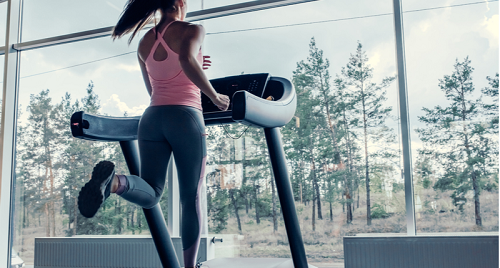Unit 5: Cardiovascular Fitness
Unit 5: Cardiovascular Fitness

Unit 5: Cardiovascular Fitness

Unit 5: Cardiovacular Fitness
This unit describes cardiovascular fitness and the importance it plays in our lives. Students will learn that the heart is the most important muscle in our body. They will also discover that cardiovascular fitness is the key to all fitness programs.
The American College of Sports Medicine describes cardiovascular fitness, sometimes referred to as aerobic fitness, as the ability of your body to take in, transport and use oxygen while exercising. Cardiovascular fitness is the result of your your heart, lungs, muscles and blood working together in concert while you exercise. Sometimes called CV fitness, cardiovascular fitness is inextricably linked with health.
Measuring Cardiovascular Fitness
Cardiovascular fitness is expressed as your VO2 max -- the maximum volume of oxygen you can take in through your lungs, pump around your body using your heart and blood vessels and then make use of in your muscles. Cardiovascular fitness can be assessed using a number of tests, including treadmill tests, step-up tests, cycling and rowing tests. Other factors, such as aerobic endurance, are part of cardiovascular fitness. Rudimentary fitness tests are often hard-wired into common cardio exercise machines so you can assess your CV fitness without having to go to a sports science laboratory.
Factors of Cardiovascular Fitness
As you get fitter -- for example after an extended period of performing regular aerobic exercise -- your body makes numerous adaptations that result in improved cardiovascular fitness. The muscles involved in respiration -- your intercostals and diaphragm -- get stronger and more efficient. The capillaries in your alveoli -- the tiny blood vessels that supply the air sacs deep in your lungs -- increase in number. In short, you become better able to take in oxygen and exhale carbon dioxide. Your heart gets stronger and more efficient as you get fitter. A fit, strong heart can pump more blood per beat than a smaller, less fit heart. Your muscles also get fitter and stronger as a result of exercise. The number and size of the capillaries that deliver oxygen to and take carbon dioxide from your muscles increases. The number and size of mitochondria -- the energy-producing cells -- also increases. As a result of the respiratory adaptations, the term 'cardiorespiratory' is sometimes used.
Cardiovascular Fitness Benefits
According to the National Strength and Conditioning Association, cardiovascular fitness is linked to a reduction in blood pressure, reduced risk of developing coronary heart disease, lowered incidence of diabetes, decreased risk of stroke and heart attack, lower resting heart rate, lower fat mass, increased bone mass (for weight bearing body parts - usually the legs in cardio exercise; resistance training more notably increases bone density), improved energy levels and greater resistance to illness and fatigue. These benefits are attributed to cardiovascular exercise as much as they are cardiovascular fitness. Benefits decline if exercise is not regular and consistent.
Unit Focus
- The cardiovascular system and how it works
- Benefits of aerobic and anaerobic exercise
- Cardiovascular diseases and risk factors of heart disease
- Measuring cardiovascular fitness and heart rate
- Training principles which improve cardiovascular fitness
- Determining exercise levels
- Guidelines for safe aerobic exercises
- Types of aerobic exercises
Vocabulary
Lesson Reading
Videos and Interactives (Click on Images to View Content)

